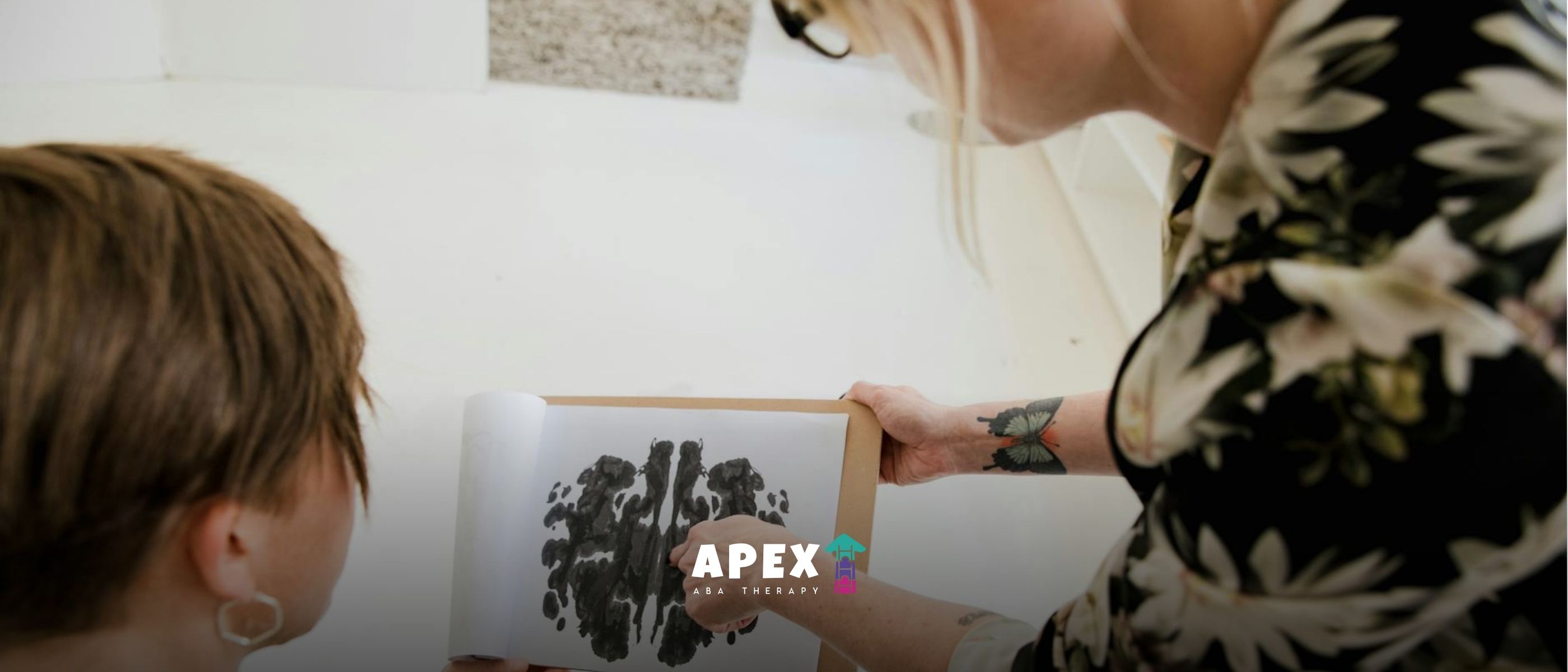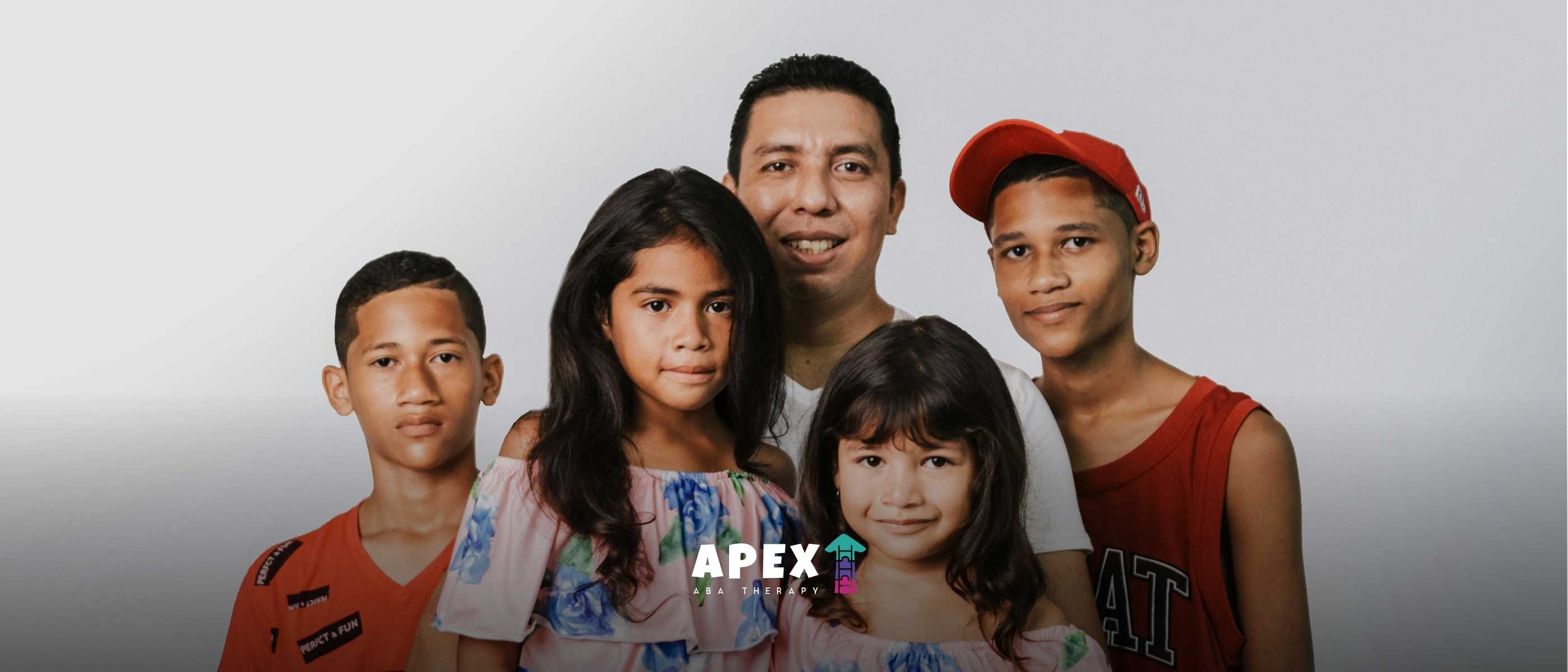Energy-Saving Strategies for Autism-Friendly Homes
Creating Sustainable and Comfortable Homes for Autistic Individuals

Energy-Saving Strategies for Autism-Friendly Homes
Introduction
In recent years, there has been a growing interest in designing homes that are both energy-efficient and accommodating to the unique needs of individuals with autism. This thoughtful approach not only benefits the environment but also enhances the quality of life for those on the autism spectrum by creating supportive and calming living environments. This article explores various strategies and technologies that families can implement to achieve a harmonious balance between energy conservation and sensory comfort.
Understanding Autism-Friendly Home Design

What are some general strategies for creating an autism-friendly home?
Creating an autism-friendly home starts with thoughtful design tailored to the unique sensory needs of individuals with autism. This involves implementing quiet spaces within the home to offer a calm retreat from overwhelming sounds and stimuli. These areas should be equipped with soft furnishings and sound-absorbing materials to enhance comfort.
Incorporating visual schedules is another effective strategy. These tools can provide structure and predictability, helping individuals navigate daily tasks with greater ease and control. This promotes a sense of stability that is essential for emotional well-being.
Furthermore, consideration of sensory needs is crucial. It is important to create an environment that accommodates these sensitivities by using non-toxic materials, adjusting lighting for softer illumination, and utilizing colors that are calming, like pastels or neutrals.
Establishing consistent routines can also support emotional security and reduce anxiety. Regular practices around meal times and sleeping schedules help foster predictability in daily life, further enhancing a sense of control.
Finally, dedicated sensory rooms equipped with weighted blankets, tactile materials, and sensory tools can profoundly benefit individuals by providing a safe space to engage in self-soothing activities, making daily life more manageable and enjoyable.
Enhancing Energy Efficiency in Autism-Friendly Homes

How can I enhance energy efficiency in an autism-friendly home?
To enhance energy efficiency in an autism-friendly home, focus on the following strategies:
LED Bulbs: Utilize energy-saving light fixtures such as LED bulbs. These bulbs not only consume 75% less energy compared to traditional incandescent bulbs but also provide adjustable brightness and color options that can help create a calming atmosphere, which is essential for individuals with autism.
Smart Home Technology: Implement smart home technology, like smart thermostats. These devices can intelligently maintain stable indoor temperatures according to daily routines, helping to minimize discomfort related to temperature fluctuations. They also help in reducing energy spikes by optimizing heating and cooling cycles.
Proper Ventilation: Enhance indoor air quality through proper ventilation and air filtration systems. Good ventilation helps reduce humidity and allergens that could contribute to sensory overload, leading to a more comfortable environment for autistic individuals.
Sound-Absorbing Materials: Using sound-absorbing materials such as acoustic panels, carpets, and curtains can significantly reduce noise pollution within the home. A quieter environment helps mitigate sensory sensitivity, promoting relaxation and focus for individuals with autism.
Good Insulation: Incorporating effective insulation is vital for maintaining a consistent indoor temperature while also minimizing external noise. Proper insulation helps decrease heating and cooling costs while providing a stable and comfortable backdrop, reducing environmental stressors.
Energy-Efficient Appliances: Opt for energy-efficient appliances, particularly those with an Energy Star rating. These appliances consume less electricity and operate more quietly, aligning with the needs of sensory-sensitive individuals while decreasing household energy bills.
By implementing these strategies, families can create an energy-efficient home that caters specifically to the sensory needs of individuals with autism, enhancing both comfort and ecological responsibility.
Key Benefits of Integrating Energy-Efficient Solutions
What are some benefits of integrating energy-efficient solutions that cater to sensory needs in the home?
Integrating energy-efficient solutions that cater to sensory needs can greatly improve comfort and overall well-being in home environments. Key benefits include:
Comfort and Well-being: Improved insulation and thermal regulation effectively maintain stable indoor climates. This stability is crucial for individuals with autism, as fluctuations in temperature can induce anxiety.
Insulation and Thermal Regulation: Proper insulation minimizes heat transfer, ensuring consistent temperatures. This can help prevent discomfort caused by environmental changes, which is particularly important for those with sensory sensitivities.
Smart Technologies: The utilization of smart home technologies, like automated thermostats and adjustable lighting, allows for tailored comfort. These systems promote independence while reducing sensory overload through predictable settings.
Predictable Settings: Automation can create routine by consistently adjusting the environment based on occupancy, thereby limiting unexpected changes that could lead to anxiety.
Sustainable Practices: Incorporating renewable energy sources, such as solar panels, reduces long-term costs and encourages eco-friendly living. This not only supports financial stability for families but also cultivates a healthier living atmosphere, conducive to nurturing the well-being of individuals with autism.
By focusing on these benefits, families can create a nurturing and accommodating home that prioritizes both comfort and energy efficiency, promoting a tranquil living space for all family members.
Role of Smart Technologies in Autism-Friendly Homes

Smart Thermostats
Smart thermostats are a vital component in autism-friendly homes. These devices learn daily routines and can adjust heating and cooling automatically, maintaining a stable indoor climate. This stability is crucial for individuals with sensory sensitivities, preventing discomfort associated with temperature fluctuations.
Automated Lighting Systems
Automated lighting systems enhance comfort significantly. They utilize motion sensors and timers, ensuring lights are only on when needed. Furthermore, these systems allow customization of brightness and color temperature, reducing harsh glare and providing a soothing environment catered to sensory needs.
Energy Savings
Integrating smart technologies can lead to considerable energy savings, potentially decreasing utility costs by 10-15%. This not only creates a more sustainable living environment but also alleviates financial pressures on families caring for autistic individuals.
Promoting Independence
By employing smart home technologies, individuals with autism can gain more independence. Features like remote-controlled lights and thermostats enable them to adjust their immediate environment, fostering a sense of control and empowerment.
The Importance of Proper Insulation
Temperature Stability
Proper insulation is essential for maintaining a consistent indoor temperature. For individuals with autism, stable temperatures reduce discomfort caused by fluctuations, helping to create a calming home environment.
Soundproofing
Incorporating effective insulation can also function as soundproofing. This minimizes noise transmission, creating quieter spaces that are crucial for individuals sensitive to auditory stimuli. A peaceful atmosphere helps mitigate sensory overload.
Noise Reduction
Insulation materials not only enhance thermal regulation but also contribute to noise reduction. By controlling external sounds, these materials foster a tranquil setting where individuals with autism can feel at ease.
Sensory Sensitivities
For those on the autism spectrum, insulative features directly impact overall comfort. By maintaining stable temperatures and reducing noise, insulation helps minimize disruptions triggered by environmental changes, supporting a more conducive living space.
| Aspect | Importance | Solutions |
|---|---|---|
| Temperature Stability | Maintains comfort, reduces fluctuations | Use high-quality insulation materials |
| Soundproofing | Reduces noise for a peaceful living environment | Acoustic panels, sound-absorbent materials |
| Noise Reduction | Controls external sounds, aids focus | Insulated windows, heavy curtains |
| Sensory Sensitivities | Lessens discomfort from environmental changes | Combination of thermal and acoustic insulation |
LED Lighting: A Bright Solution
Energy Savings
LED lighting is a highly efficient alternative to traditional incandescent bulbs, consuming up to 75% less energy. This significant reduction in energy usage not only lowers utility bills but also contributes to a more sustainable home environment, which is particularly beneficial for families managing the costs associated with autism-related needs.
Adjustable Brightness
One of the standout features of LED lighting systems is their adjustable brightness. Many modern LED solutions offer customizable settings for brightness and color temperature. This flexibility allows families to tailor lighting according to the specific sensory needs of autistic individuals, helping to create a soothing atmosphere in the home.
Sensory Overload Reduction
Flickering lights can be distracting or even distressing for individuals with autism. LED bulbs provide a consistent, flicker-free brightness that can help minimize sensory overload. By employing smart lighting systems, families can automate schedules and reduce glare, enhancing the overall comfort and emotional stability of residents.
Incorporating LED lighting not only supports energy efficiency but also cultivates a calm and supportive environment for individuals with autism.
Harnessing Solar Power for Energy Independence
Cost Savings
Families with autistic individuals can significantly benefit from harnessing solar power. The installation of solar panels can lead to annual savings ranging from $600 to $1,200 on electricity costs. This financial relief allows families to allocate more resources towards autism care, making essential services more accessible.
Environmental Sustainability
Using solar energy not only promotes energy independence but also reduces reliance on fossil fuels. By integrating renewable energy solutions, families can enhance their homes' sustainability profile, contributing to a healthier planet. This shift plays a crucial role in creating a supportive environment for those with autism, as it aligns with ecological responsibility.
Utility Bill Reduction
Solar energy solutions help families manage their utility costs effectively. The reduction in electricity bills provides financial stability and allows for better budgeting in the long term. This is particularly important for families who may already be facing increased costs associated with autistic care needs.
| Aspect | Description | Benefits |
|---|---|---|
| Cost Savings | Annual savings from solar panel installation | $600 - $1,200 savings |
| Environmental Impact | Decreased reliance on fossil fuels | Enhanced sustainability and health of surrounding ecosystems |
| Utility Management | Lower utility bills due to self-generated solar energy | Greater financial flexibility to support autism care services |
Enhancing Indoor Air Quality
Importance of Ventilation Systems
Proper ventilation systems play a critical role in maintaining indoor air quality, particularly in homes designed for individuals with autism. These systems ensure a steady flow of fresh air, reducing humidity levels and minimizing the buildup of indoor pollutants. This is essential for sensitive individuals as it helps create a healthier living environment that can alleviate sensory overload.
Effect of Air Filtration
Air filtration technologies, including HEPA filters, can significantly improve air quality by trapping allergens and airborne irritants. Installing efficient air purification systems is crucial, especially for those who experience heightened sensitivities to dust, pollen, and other pollutants. Good air filtration helps create a cleaner indoor atmosphere, thus contributing to overall comfort.
Addressing Sensory Sensitivity
Individuals with autism may experience sensory sensitivities that can be exacerbated by poor air quality. By optimizing ventilation and filtration, families can create a more soothing environment. This adjustment not only enhances comfort but also promotes emotional well-being, reducing irritability caused by environmental stressors.
Reducing Pollutants
Improving indoor air quality involves regular maintenance of ventilation and air filtration systems to minimize indoor pollutants. Keeping these systems clean can significantly lower the dust and allergens that accumulate, fostering a healthier space for individuals with autism and contributing to their overall quality of life.
Behavioral Strategies for Energy Management
Daily Routines
Creating consistent daily routines is essential for families with autistic individuals. Structuring activities around fixed timelines helps everyone know what to expect, reducing anxiety related to unexpected changes in energy use. For instance, setting specific times for using appliances can minimize energy spikes, maintaining a stable environment.
Predictability
Predictability goes hand in hand with routine. By establishing schedules for energy use, such as running the dishwasher or laundry during off-peak hours, families can mitigate discomfort caused by sudden changes in energy usage. This predictability fosters a calmer atmosphere, aiding emotional stability.
Energy Conservation Habits
Encouraging energy conservation habits, such as turning off lights when leaving a room and using energy-efficient appliances, are effective strategies. Teaching autistic individuals about energy savings allows them to engage with environmental responsibility. Utilizing tools like energy accounting systems can help track and visualize energy consumption, facilitating better habits.
Implementing these behavioral strategies is crucial for creating a comfortable and efficient living space for families supporting individuals with autism.
Financial Incentives for Energy-Efficient Homes

Grants and Loans
Many families seeking to make their homes more energy-efficient can explore a variety of grants and low-interest loan options. These financial resources often support upgrades such as better insulation, energy-efficient appliances, and renewable energy solutions like solar panels. Utilizing these funds can significantly alleviate the upfront costs of creating a supportive living environment for individuals with autism.
Tax Credits
Tax credits are another avenue for families to reduce their financial burden when implementing energy-efficient measures. Many regions offer tax incentives for adopting technologies such as ENERGY STAR-rated appliances and solar energy systems. These credits can provide substantial savings on annual taxes, allowing families to allocate more resources towards supporting their loved ones.
Cost-saving Programs
In addition to grants and tax credits, various utility companies offer cost-saving programs that encourage energy efficiency. Participating families may receive rebates for upgrading to energy-efficient appliances or implementing smart technologies, leading to monthly savings on utility bills. By taking advantage of these programs, families can create financially sustainable living spaces while ensuring comfort and support for their autistic members.
| Incentive Type | Description | Benefits |
|---|---|---|
| Grants & Loans | Financial assistance for energy upgrades | Reduces upfront costs |
| Tax Credits | Deductions for energy-efficient upgrades | Lowers annual tax burden |
| Cost-saving Programs | Rebates from utility companies for energy-efficient purchases | Saves on monthly utility bills |
Creating a Sensory-Friendly Environment

Color Schemes
Using calming color schemes, such as soft pastels or neutral tones, can significantly enhance the emotional stability of individuals with autism. These colors contribute to a soothing atmosphere, helping to reduce anxiety and provide a sense of comfort within the home.
Tactile Materials
Incorporating tactile materials like plush rugs, soft cushions, and textured wall coverings can create a sensory-rich environment. Such materials encourage positive sensory experiences, allowing individuals to engage with their surroundings in a comforting way that minimizes stressors.
Relaxation Spaces
Designating quiet, relaxation spaces within the home proves essential for managing sensory overload. These areas can be equipped with sound-absorbing materials, comfortable seating, and adjustable lighting, offering a retreat where individuals can feel safe and secure.
Emotional Stability
Creating a space that fosters emotional stability involves not only color and texture but also the arrangement of furniture and lighting. By maintaining a consistent indoor climate with smart thermostats and utilizing energy-efficient lighting, families can help reduce environmental stressors. This integrated approach ensures that individuals with autism have a nurturing, calm environment to thrive in.
Conclusion
Creating an autism-friendly home that is also energy-efficient requires thoughtful consideration of design elements and technology integration. These strategies not only help reduce utility costs but also enhance the sensory experience of individuals with autism by providing a calm and predictable environment. As families continue to seek solutions that balance comfort with sustainability, adopting energy-efficient practices tailored to autism can significantly improve quality of life and promote environmental stewardship. By utilizing these strategies, families can create supportive living spaces that address both sensory needs and energy conservation goals.
References
- Energy-Saving Tips for Autism Families - Discovery ABA
- Energy-Saving Strategies for Autism-Friendly Homes
- Energy-saving tips for autism families - Cross River Therapy
- Energy-Saving Strategies for Welcoming Autism-Friendly Homes
- Energy-Saving Strategies For Autism-Friendly Homes
- Energy-Saving Strategies for Autism-Friendly Homes - Bridge Care ...
- Energy-saving strategies for autism-friendly homes
- Autism-Friendly Tips for Energy Efficiency
- Energy-Saving Solutions for Autism Families - B Above Services
- Energy-Saving Tips for Autism Families - Total Care ABA Therapy
Frequently Asked Questions
.jpg)
Autism And Bed Wetting: Unlocking Solutions
Explore the connection between autism and bedwetting and find practical insights and solutions for parents and caregivers. Discover how understanding and support can make a difference in managing this common challenge for children and individuals on the autism spectrum.

Proven Examples of Smart Goals for Students with Autism
Unlock the potential of students with autism through proven examples of SMART goals. Set them up for success!
.jpg)
What is the Sensory Processing Disorder ICD-10 Code?
If you or someone you know has been diagnosed with Sensory Processing Disorder (SPD), you may have heard of the ICD-10 code. In this article, we'll explain what the SPD ICD-10 code is, what it means, and why it's important.

Understanding Vestibular Stimming in Autism
Demystifying vestibular stimming in autism: Understand the impact, strategies, and support for individuals. Uncover the power of self-regulation through stimming.

Do Amish Kids Get Autism?
Explore the prevalence of autism in Amish children and uncover the factors that may contribute to this phenomenon. Delve into the unique characteristics of Amish communities and their impact on autism rates.

Breaking Barriers: Free Sensory Toys for Autism That Make a Difference
Discover life-changing free sensory toys for autism! Unlock the power of sensory play for children with autism.

Famous People Thriving with Autism or Aspergers Syndrome
Discover the extraordinary journeys of famous people thriving with autism and Asperger's syndrome. Unveil the inspiring stories of icons who break stereotypes.

IEP Goals for Autism: Ultimate Guide
Unlock the potential: Constructing meaningful IEP goals for autism to support your child's growth and development. Discover strategies and examples!

Young Celebrities with Autism
Discover inspiring young celebrities with autism and their journeys in entertainment and advocacy.
.jpg)
Autism Hand Posturing: Causes, Types, and Management
Autism hand posturing refers to repetitive and often purposeless movements or postures of the hands and fingers seen in individuals with autism. These movements range from simple hand flapping to more complex finger twisting and tapping.

Distinguishing ADHD vs Autism Stimming
ADHD stimming vs autism stimming: Discover the motivations and characteristics behind these behaviors in individuals.

Addressing Rigid Thinking in Autism
Unlocking flexibility in autism! Discover strategies, therapy, and tools to address rigid thinking for a brighter future.

DSM 6 Release Date Revealed
Unlock the future with DSM-6! Discover the release date and anticipated changes in the mental health landscape.

Why Do Autistic People Rock?
Uncover insights with empathy, exploring the diverse ways rocking serves as a coping mechanism and sensory regulation for individuals on the autism spectrum. Join us in celebrating the beauty of neurodiversity, fostering understanding and appreciation for this distinctive aspect of autistic experience.

Signs Your Toddler Is Not Autistic
Discover reassuring signs that your toddler may not be autistic in this human-centered guide. Explore the joy of your child's unique developmental journey, celebrating their social engagement and communication skills.
.jpg)
Facial Features & Physical Characteristics Of Autism
Some researchers believe that these physical characteristics are related to the underlying neurological differences in individuals with autism.

The Three Main Causes of Autism: Exploring Genetics, Environment, and Brain Differences
Autism is influenced by genetics, environmental factors, and brain differences. Learn how these three causes contribute to the development of the condition.

What are the Common Behaviors of Autism?
Autism behaviors can vary widely. Learn about the most common traits, from social difficulties to sensory sensitivities, and how ABA therapy can support progress.

What Age is Too Late for ABA Therapy?
It’s never too late to start ABA therapy. Discover how children, teens, and adults can still make meaningful progress with personalized ABA support.

Is In-Home ABA the Right Fit for Your Child? Here’s What You Need to Know
In-home ABA therapy offers a tailored approach to support your child’s development. Learn how it can improve key skills like communication, social interaction, and more.

How Families Can Make ABA Therapy a Positive and Successful Experience
Learn how families can ensure ABA therapy is a positive, successful experience. Discover tips for involvement, consistency, and support to make ABA effective.

Can a Child Have Autism and Still Talk Normally?
Can a Child Have Autism and Still Talk Normally?

What Are the Red Flags for Autism in a 2-Year-Old?
Autism Red Flags in 2-Year-Old Children | Apex ABA

Is Autism a Lifelong Condition?
Is Autism a Lifelong Condition? Understanding The Journey

Best Age to Start ABA Therapy & What Parents Should Know
Best Age to Begin ABA Therapy for Children | Apex ABA

What’s the Difference Between High-Functioning Autism and Asperger’s?
Difference Between High-Functioning Autism and Asperger’s

ABA Therapy Enhancing Social Skills: A Key to Improved Communication and Interaction for Children with Autism
How ABA Therapy Helps Children Build Social Skills

Misconceptions About ABA Therapy: Clearing Up the Myths
Common Misconceptions About ABA Therapy | Apex ABA

What Does It Mean to Be “On the Spectrum”?
What Does It Mean to Be on the Autism Spectrum? | Apex ABA

Understanding the Power of Functional Behavior Assessment ABA
Effective ABA Techniques for Behavioral Intervention

Discover How ABA Helps ADHD in Your Child’s Life
How ABA Therapy Helps Children with ADHD | Apex ABA

Life-Changing ABA Therapy Case Studies You Need to Know
Real Success Stories from ABA Therapy Journeys | Apex ABA

Can Children “Outgrow” Autism?
Can Children Outgrow Autism? Understanding the Facts

Is Autism a Mental Illness or a Developmental Disorder?
Mental Illness or Developmental Disorder Explained

Is Autism More Common in Boys Than Girls?
Autism in Boys vs Girls: What the Research Reveals

What is the Difference Between Autism and Sensory Processing Disorder?
Autism vs Sensory Processing Disorder Differences | Apex ABA

What's the Difference Between Autism and Speech Delay?
Autism vs Speech Delay & Key Differences Explained | Apex

ABA Therapy in North Carolina: A Complete Guide for Families
Learn everything about ABA therapy in North Carolina, including services, costs, insurance coverage, and how to choose the best ABA provider in North Carolina.

ABA Therapy vs Preschool: Making the Right Choice Explained
Learn the key differences between ABA therapy and preschool to help you choose the best option for supporting your child’s early learning and development.

Which Personality Type Is Most Likely to Be Autistic?
Which Personality Type Is Most Likely to Be Autistic? | Apex ABA

Why Consistency Matters: What Happens If ABA Therapy Ends Prematurely
What Happens If ABA Therapy Is Stopped Too Early? | Apex ABA

How Can You Gain an Autistic Person’s Attention? Tips for Meaningful Connection
How Can You Gain an Autistic Person’s Attention?

Sensory Sensitivity and Sixth Sense: What Autism Research Shows
Do Autistic People Have Sixth Sense? | Apex ABA

What Happens If Autism Is Left Untreated?
Can Autism Get Worse If Untreated? | Apex ABA

What Not To Do With An Autistic Child: Avoid These 10 Mistakes
What Not To Do With An Autistic Child? | Apex ABA

Coping with Regressive Autism: Tips for Parents
What is Regressive Autism? | Apex ABA

Do Autistic Kids Live with Parents Forever? Here’s the Reality
Do autistic kids live with parents forever? Discover the facts about independence and living arrangements in autism with expert-backed insights.

Red Flags in ABA Therapy: What Parents Must Watch For
What are the red flags in ABA therapy? Learn to identify warning signs for safe, effective autism treatment in this blog.

Can You Go from Level 3 Autism to Level 1? Is It Possible?
Can you go from level 3 autism to level 1? Learn about progress, therapy, and support options with expert help from Apex ABA.

Autism vs Introversion: How to Tell the Difference
Is it autism or just introversion? Learn the key differences and signs with expert insights from Apex ABA.

ABA for Managing Transitions: Tips to Ease Change for Kids
Learn how ABA for managing transitions helps children with autism handle change smoothly.

Understanding the 7 Dimensions of ABA for Better Outcomes
Discover the 7 Dimensions of ABA and how they can lead to better outcomes.

5 Unique Autistic Love Languages You Should Know About
Discover the 5 unique autistic love languages that can enhance your relationships.

Transforming Futures: Improving Lives of Kids with Autism
Discover how innovative strategies are focused on improving lives of kids with autism.

ABA Therapy Techniques for Addressing Repetitive Behaviors in Autism
Harnessing ABA Strategies to Tackle Repetitive Behaviors in Autism

The Role of ABA Therapy in Enhancing Communication Skills
Transforming Communication for Children with Autism Through ABA Therapy

How ABA Therapy Supports Effective Communication in Nonverbal Children
Unlocking Speech Through ABA: Transformative Paths for Nonverbal Children

How to Help Your Child Transfer Skills Learned in ABA Therapy to Real Life
Unlocking Real-World Success for Children in ABA Therapy

How ABA Therapy Helps Children Develop Better Organizational Skills
Empowering Children with ABA Therapy for Enhanced Organizational Skills

The Importance of Creating a Structured Routine in ABA Therapy
How Structured Routines Transform ABA Therapy for Autism

The Role of ABA Therapy in Developing Conflict Resolution Skills
How ABA Therapy Transforms Conflict Resolution Competence

The Importance of Generalization in ABA Therapy for Autism
Unraveling the Role of Generalization in Enhancing ABA Therapy Outcomes

Why ABA Therapy is Crucial for Parents of Children with Autism
The Transformative Impact of ABA Therapy on Families with Autistic Children

How to Involve Parents in the ABA Therapy Process
Maximize Parent Engagement in ABA Therapy for Better Outcomes

What are the Core Principles of ABA Therapy?
Exploring the Cornerstones of Applied Behavior Analysis

Why Communication is Key in ABA Therapy for Autism
The Crucial Role of Communication in ABA Therapy for Autism

Why ABA Therapy Works for Children with Autism Regardless of Severity
Effective ABA Interventions for All Levels of Autism

Why It’s Important to Maintain a Balanced Approach to ABA Therapy
Balancing Effectiveness and Ethics in ABA Therapy

The Role of ABA Therapy in Developing Adaptive Behavior Skills
Exploring How ABA Therapy Transforms Lives

The Benefits of Combining ABA Therapy with Speech Therapy
Maximizing Development with Integrated Therapy Approaches

What to Expect During an ABA Therapy Session
Demystifying ABA Therapy Sessions: A Comprehensive Overview

How ABA Therapy Enhances Cognitive Functioning in Children with Autism
Exploring the Influence of Applied Behavior Analysis on Autism Cognition

How ABA Therapy Helps Children with Autism with Transitions Between Activities
Easing Transitions for Children with Autism: The Role of ABA Therapy

How to Foster Cooperation Between Parents and Therapists in ABA Therapy
Building Effective Partnerships in ABA Therapy

The Role of Positive Reinforcement in ABA Therapy
Exploring the Impact of Positive Reinforcement in Modern ABA Therapy

Why ABA Therapy is Effective for Children of All Ages
Understanding the Reach and Impact of ABA Therapy Across Age Groups

How to Support Your Child’s Emotional Growth with ABA Therapy
Harnessing ABA Therapy for Enhancing Emotional Development in Children with Autism

The Role of ABA Therapy in Enhancing Peer Relationships for Children with Autism
Harnessing ABA Therapy to Boost Social Connections Among Autistic Children

How to Overcome Common Challenges in ABA Therapy
Navigating Hurdles in ABA Therapy: Strategies and Solutions

How to Manage Behavioral Expectations with ABA Therapy
Understanding Applied Behavior Analysis in Behavioral Management

How ABA Therapy Promotes Emotional Regulation in Children with Autism
Unlocking Emotional Balance: ABA Therapy's Role in Autism

How ABA Therapy Improves Social Skills in Children with Autism
Harnessing ABA Therapy to Enhance Social Competency in Autistic Children

The Role of ABA Therapy in Classroom Success for Children with Autism
Harnessing ABA for Academic and Social Growth in Autism

The Importance of Evaluating and Revising ABA Therapy Goals Regularly
Regular Evaluations: The Cornerstone of ABA Therapy Success

How to Choose the Right ABA Therapy Program for Your Child
Finding the Perfect ABA Therapy Fit for Your Child

The Role of Behavior Analysts in Implementing ABA Therapy
Understanding the Vital Contributions of Behavior Analysts in ABA Therapy

The Role of RBTs (Registered Behavior Technicians) in ABA Therapy
A Closer Look at the Essential Work of RBTs in ABA Therapy

What Makes ABA Therapy Effective for Different Learning Styles?
Unraveling the Flexibility and Effectiveness of ABA Therapy

Understanding the Importance of Data Collection in ABA Therapy
The Role of Data in Shaping Effective ABA Therapy

How ABA Therapy Helps with Toilet Training in Children with Autism
Unlocking Independence: ABA's Role in Autism Toilet Training

The Importance of Encouraging Natural Play in ABA Therapy
Revolutionizing ABA Therapy with Natural Play

How to Make the Most of ABA Therapy at Home
Enhancing ABA Therapy Practices Within Your Home

How to Make ABA Therapy Fun and Engaging for Children with Autism
Transforming ABA Therapy into a Fun Learning Journey

The Role of ABA Therapy in Addressing Verbal and Nonverbal Communication in Autism
Enhancing Communication Skills in Autism Through ABA Therapy

Understanding the Role of Family in ABA Therapy for Autism
The Crucial Impact of Family Engagement in Autism Therapy

How to Handle Setbacks and Challenges in ABA Therapy
Navigating Difficulties and Setbacks in ABA Therapy for Children

How ABA Therapy Can Help Children Build Stronger Relationships with Peers
Unpacking the Influence of ABA Therapy on Peer Relationships in Children

Understanding the Concept of Shaping in ABA Therapy
Demystifying Shaping Techniques in Applied Behavior Analysis

How ABA Therapy Enhances Independent Living Skills in Autism
Unlocking Independence: The Role of ABA Therapy in Autism
.jpg)
90+ Reading Statistics, Facts and Demographics
In this article, we will dive into 60 reading statistics that shed light on the importance of reading and its impact on different aspects of life.



